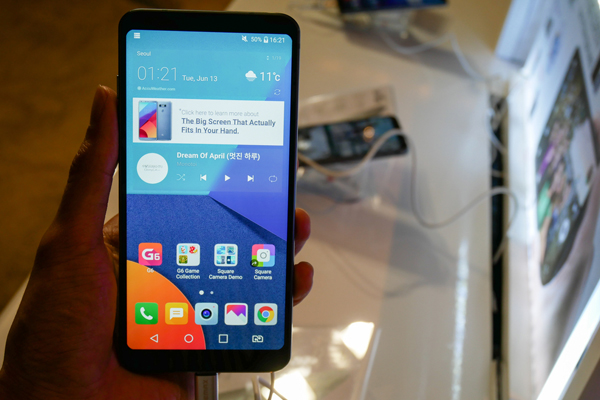You’ve created an entirely new invention. You’ve prototyped, you’ve tested, you’ve perfected, you’ve researched, and you’ve finally got a product you can be proud of. Now for your next challenge: choosing a name. It’s funny how, for a lot of inventors, naming the product is actually much harder than creating it in the first place. It’s a completely different skill set and, if you consider yourself an inventor, it’s unlikely you’d also consider yourself a wordsmith. If you do, bravo to you. But for those who don’t, we know it can be a stressful task. However, it may not be as hard as you think. In our newest series, What’s in a Name, we’ll take a look at how different companies and inventions were named to help you find your own inspiration. Let’s start with how some big tech companies were named:

Apple
There is rarely a person out there in the world today who doesn’t know about this giant tech conglomerate. Everything about the brand is recognizable, from its half-eaten apple logo to the sleek designs of its products and stores. But how did Apple become more than just the name of our favorite fall fruit?
Steve Jobs has discussed how, when starting out, the company had to file a business name statement for official purposes. Several suggestions were made, finally landing on Apple Computer, with the stipulation that it would only become the company name if no one else had any better ideas before the filing deadline. Clearly, no one did and they stuck with Apple Computer.
According to Jobs, he landed on Apple Computer for a fairly simple reason, “Partially because I like Apples a lot and partially because Apple is ahead of Atari in the phonebook and I used to work at Atari.”
Sony
This tech company actually began its journey under an entirely different name. Founded in 1946, it was originally called Tokyo Tsushin Kogyo K.K. (Tokyo Telecommunications Engineering Corporation). Otherwise referred to as Totsuko. Talk about a mouthful, right? At this point, though, the company was purely established for research purposes. It wasn’t until 1947 that they launched their first product- the power megaphone.
The name change didn’t come until the 1950s. The company had decided to expand on a global scale, but the trademark TTK already belonged to another company. Interestingly enough, the name they went with (spoiler alert, they went with Sony) was an interesting blend of Latin and English slang. They combined the word ‘Sonus’ meaning sound and ‘Sonny’ meaning well-to-do young man, to end up with one of the more recognizable names in the tech world today.

Did you know that this website turned household name was initially called “Backrub?” Yes, you heard us correctly, Google could’ve been called Backrub. We know what you’re probably thinking…Why? Heavens above, why? Well, according to Business Insider, this name was considered because the program analyzed the web’s “backlinks” to understand how important a website was and what other websites it related to. We would’ve guessed it was some sort of strange play on the phrase “You scratch my back, I’ll scratch yours,” but that’s neither here nor there.
Well… it’s certainly not here anymore. They ended up deciding (rightfully so) that the name wasn’t right so they ended up landing on Google. It was a clever misspelling of the word Googol, a word that represents 10^100 (or a 1 followed by 100 zeros). This was suggested by a graduate student from Stanford named Sean Anderson and meant to convey the enormous amount of data they planned to make available.
Samsung
Some may be surprised to know that, though Samsung is now known largely for its tech products, its beginnings weren’t in the tech industry. Samsung’s first products were actually dried fish, vegetables, noodles, and fruit. Weird, right? Though it was originally founded in 1938, it didn’t set its sights on tech until 1987 when the new CEO and son of the founder, Kun-Hee Lee, took over. This is actually one of the few tech companies that started out with its current name. According to The Next Web, the word Samsung in Korean means “three stars” and was chosen by the founders to represent the virtues of being “big, numerous, and powerful,” like stars in the sky. In fact, between the years 1938 and 1993, the Samsung logo featured different designs of the three stars.

LG
The original LG company, then called Goldstar, was founded in 1958 in the aftermath of the Korean War. It was established with a goal to build tech products. A sister company to Goldstar was established and it was called Lak-Hui (pronounced “Lucky”). Thus, the company then began referring to itself as “Lucky Goldstar”. Later, they began to use the LG initials and tagged the meaning as “Life’s Good” rather than “Lucky Goldstar.” Today, the company merely goes by its initials rather than variations thereupon.
As you can see, naming a product or company doesn’t always have to be as complicated as you think. It doesn’t always have to be some clever play on words or indicative of functionality, as long as it stands out and sounds unique enough to intrigue consumers. Though… maybe not Backrub unique.
When it comes to your invention, do you prefer choosing a practical name a la Steve Jobs or taking the more symbolic approach used by Kun-Hee Lee? Take our interactive quiz to learn more about what kind of inventor you are and what inspires your creative side.
